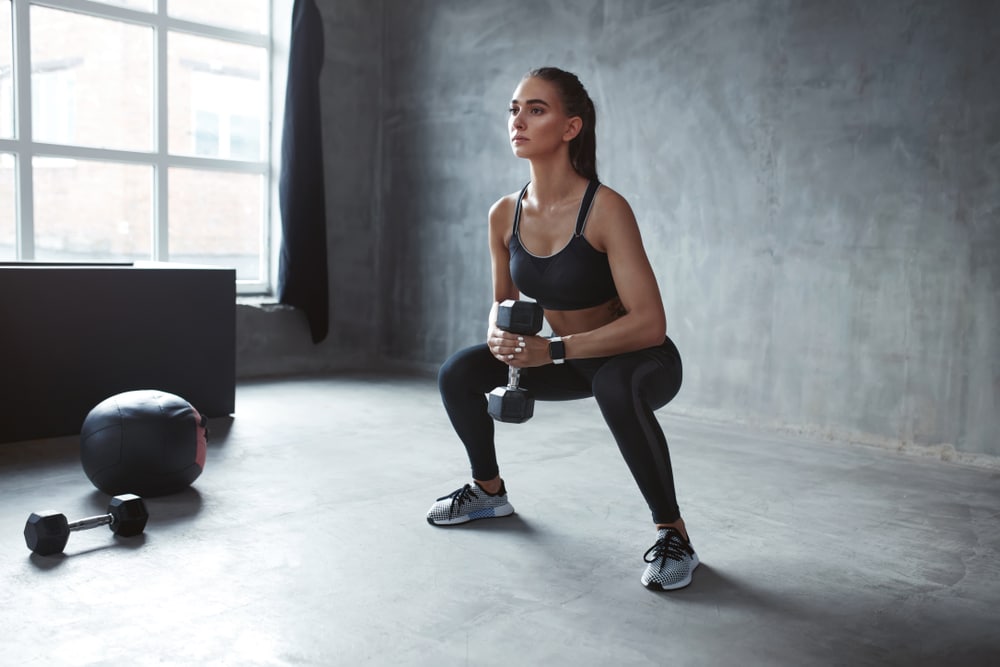

HIIT - super strong weight loss effect | 10 minutes of HIIT equals to running for 0.5 hour | Burning calories throughout the day
HIIT is a training method that combines high-intensity cardiovascular exercise with intervals of low-intensity exercise. It typically consists of several intervals of high-intensity exercise lasting from 30 seconds to 2 minutes, with periods of the same or slightly longer low-intensity exercise in between. During the high-intensity intervals, you need to push your heart rate to about 80% of your maximum heart rate, which effectively enhances cardiovascular fitness and promotes fat burning for weight loss.
Here are the methods to calculate maximum heart rate and optimal heart rate for HIIT:
1. Calculate maximum heart rate: Use the formula 220 minus your age
For example, if you're 30 years old, your maximum heart rate would be 220 minus 30, which is 190.
2. Calculate optimal heart rate for HIIT: Multiply the maximum heart rate by 80%.
For example, for a 30-year-old, the optimal heart rate would be 190 multiplied by 0.8, which is 152.
This value of 152 represents the average heart rate per minute during high-intensity exercise. Please note that these values are approximate, and you can adjust them based on your individual fitness level and goals. It's advisable to consult with a healthcare professional or trainer for guidance before starting any exercise program.
HIIT offers six main benefits and effects. The most common benefit is its noticeable weight loss and slimming effect. Due to the need to exert maximum effort in a short period, HIIT has superior fat-burning effects compared to running. Additionally, with the busy lifestyle of Hong Kong residents, there is often limited time for weight loss exercises. HIIT, with its adjustable workout duration and significant effects, is a time-saving choice.
Here are the six main benefits of HIIT:
1. Convenience and Time Efficiency
HIIT is a highly efficient training method that typically requires only 15 to 30 minutes, making it suitable for busy lifestyles. A 10-minute HIIT workout can be equivalent to a 30-minute run. You can do HIIT at home or in the gym, and it doesn't require much equipment.
2. Improved Cardiovascular Endurance
HIIT rapidly increases heart rate and respiratory rate through high-intensity exercises, effectively training the cardiovascular system. Long-term HIIT can enhance cardiovascular function and improve endurance levels.
3. Calorie Burning
Due to the high-intensity nature of HIIT, it can quickly burn a significant amount of calories in a short period. Compared to longer durations of steady-state aerobic exercises like jogging, HIIT can achieve the same or even better calorie-burning effects in less time.
4. Afterburn Effect
High-intensity HIIT training can elevate the basal metabolic rate, which is the number of calories burned at rest. Even after completing a HIIT session, the body continues to burn fat for up to 24 hours. Research shows that two minutes of high-intensity exercise can have the same muscle effects as 30 minutes of moderate exercise.
5. Muscle Preservation
Traditional aerobic exercises may lead to muscle loss, but HIIT can better preserve muscle mass. High-intensity exercise stimulates muscle growth and strength development while also helping to reduce muscle loss.
6. Enhanced Mental Performance
HIIT not only benefits the body but also has positive effects on mental health. Exercise releases endorphins and other feel-good neurotransmitters, helping to improve mood, reduce stress and anxiety, and enhance sleep quality.
While HIIT has many benefits, it is a high-intensity form of exercise and may not be suitable for everyone. If you have any health concerns, especially related to the heart or joints, it's advisable to consult with a doctor before starting HIIT training. Additionally, allowing for adequate rest and adaptation periods is crucial to avoid overtraining and injuries.
Here are some beginner-friendly HIIT workout exercises:
Perform high knees for 30 seconds, followed by a 90-second rest.

Do mountain climbers for 30 seconds, followed by a 90-second rest.

Perform bicycle crunches for 30 seconds, followed by a 90-second rest.

Do renegade rows with dumbbells for 30 seconds (you can keep your knees on the ground), followed by a 90-second rest.

Perform dumbbell squats for 30 seconds, followed by a 90-second rest.

Do shoulder presses for 30 seconds, followed by a 90-second rest.

Perform dumbbell lunges for 30 seconds, followed by a 90-second rest.

Do bicep curls for 30 seconds, followed by a 90-second rest.

Choose 5-6 exercises from the above list and repeat them for 4-6 sets.

